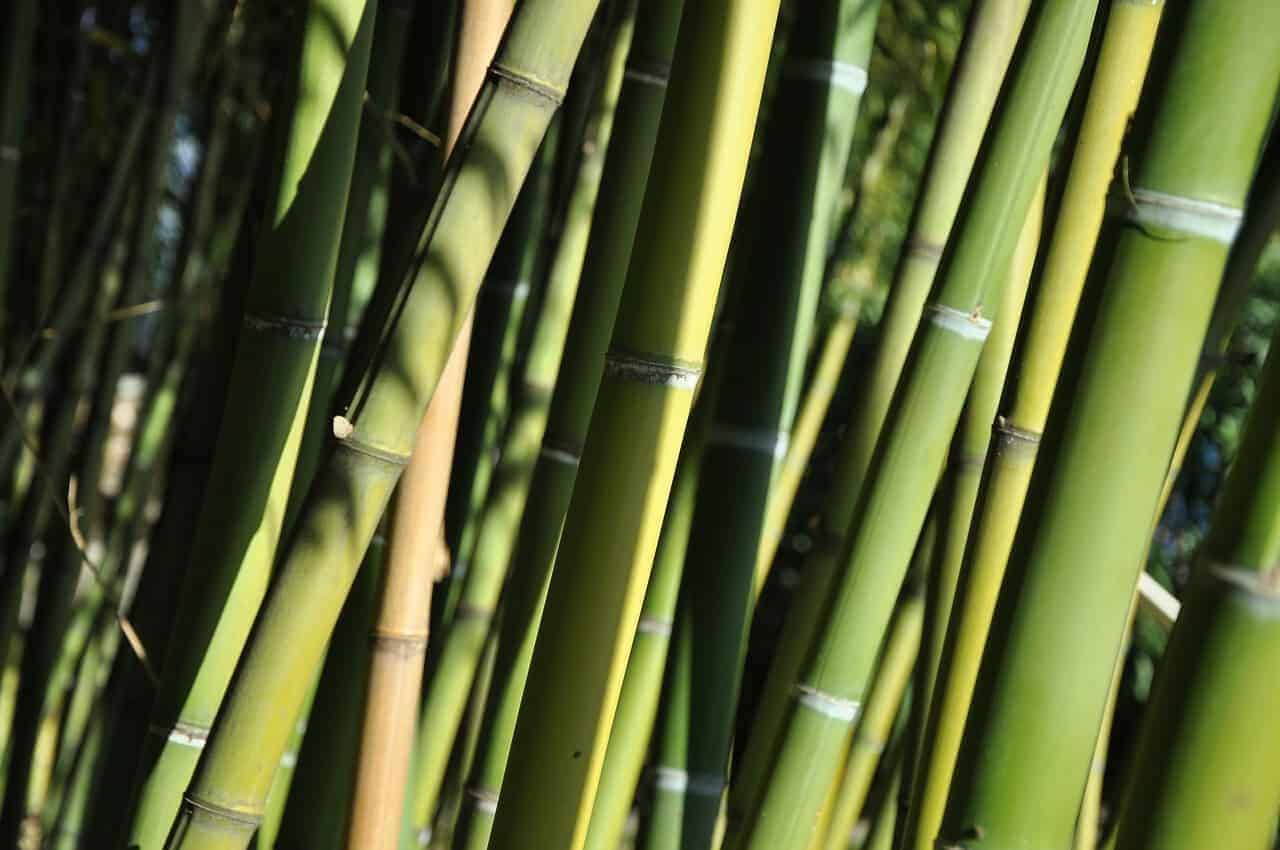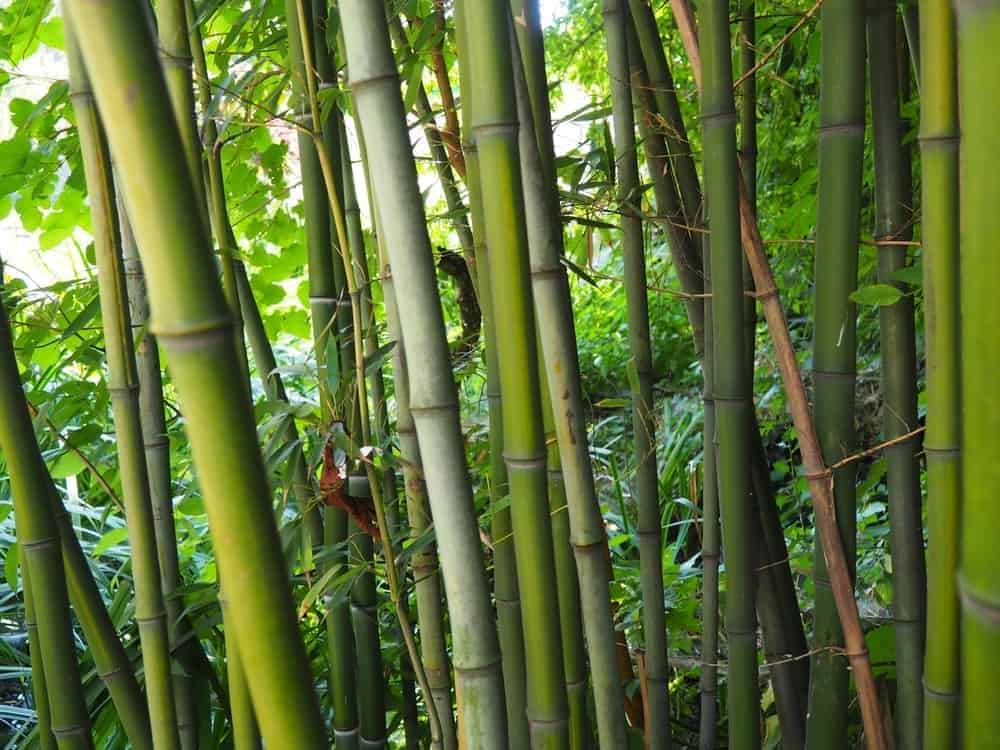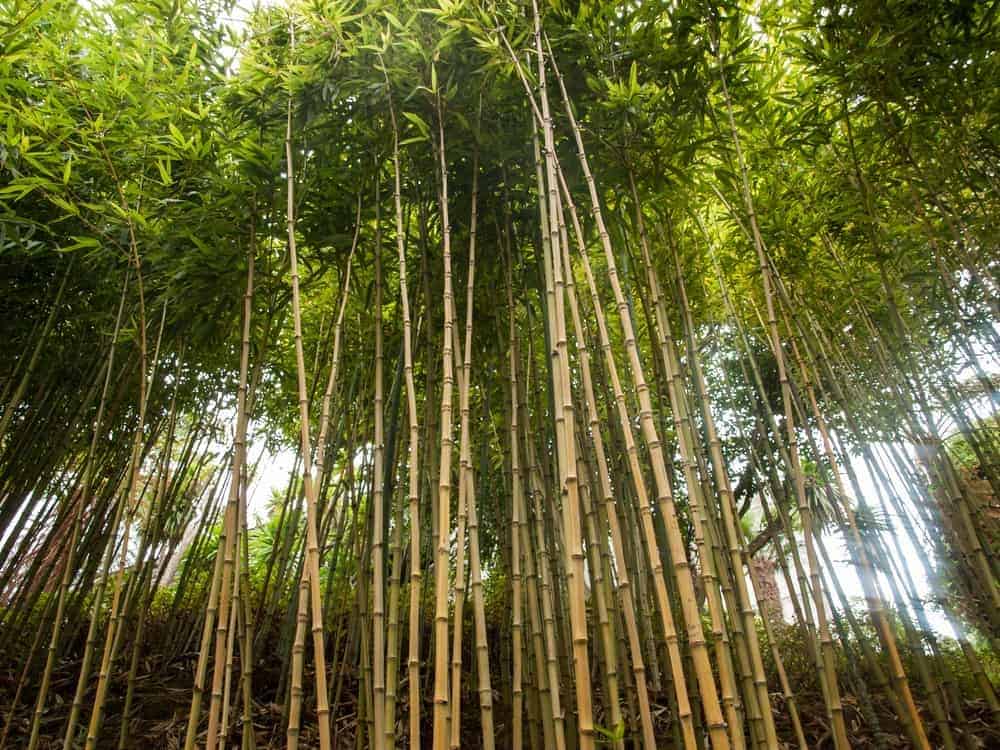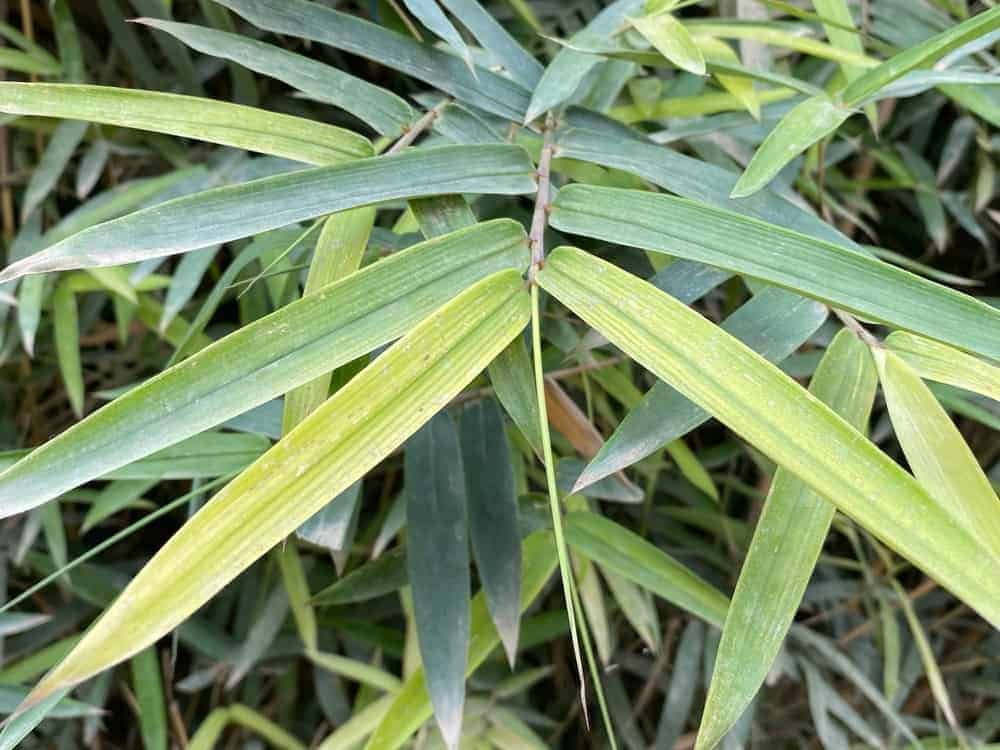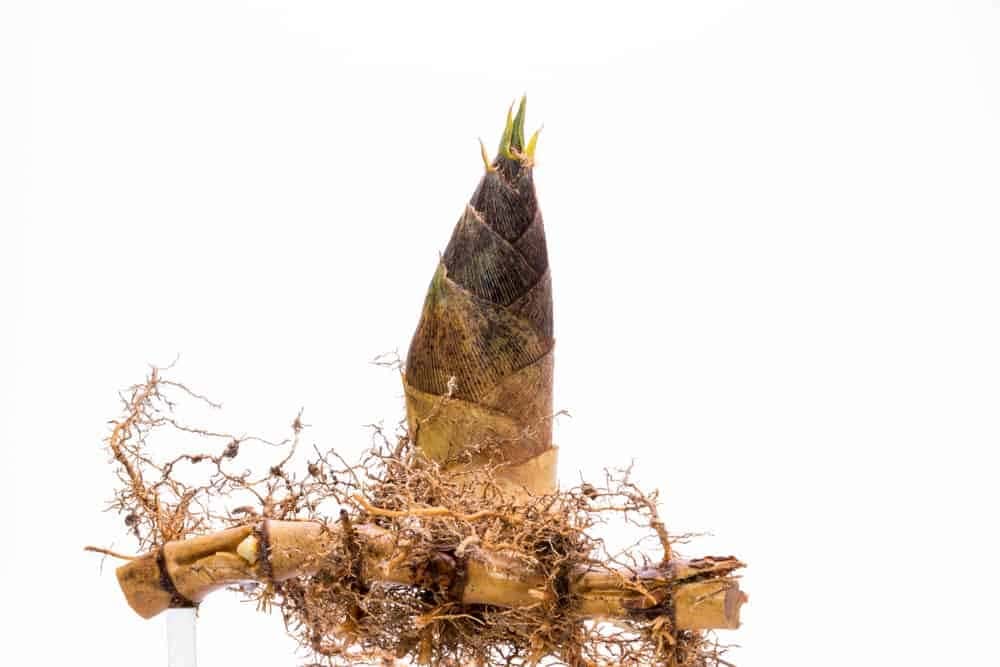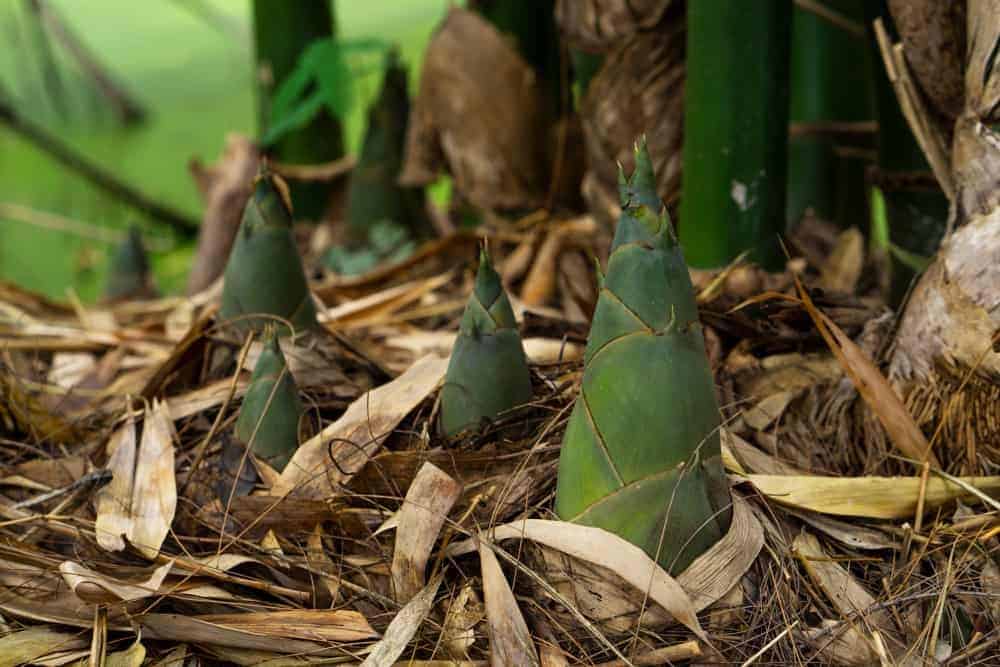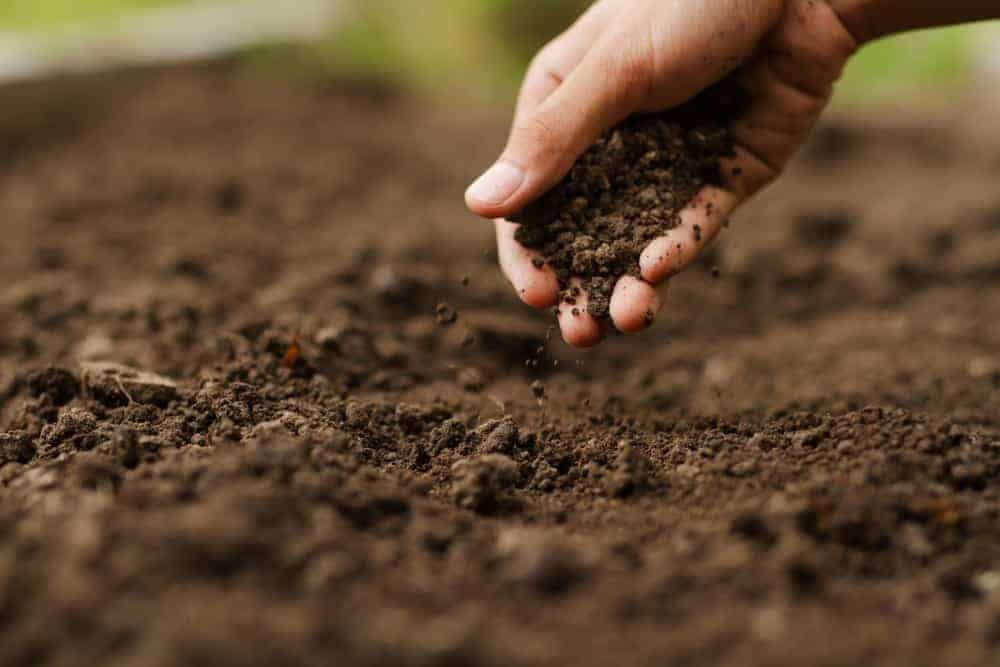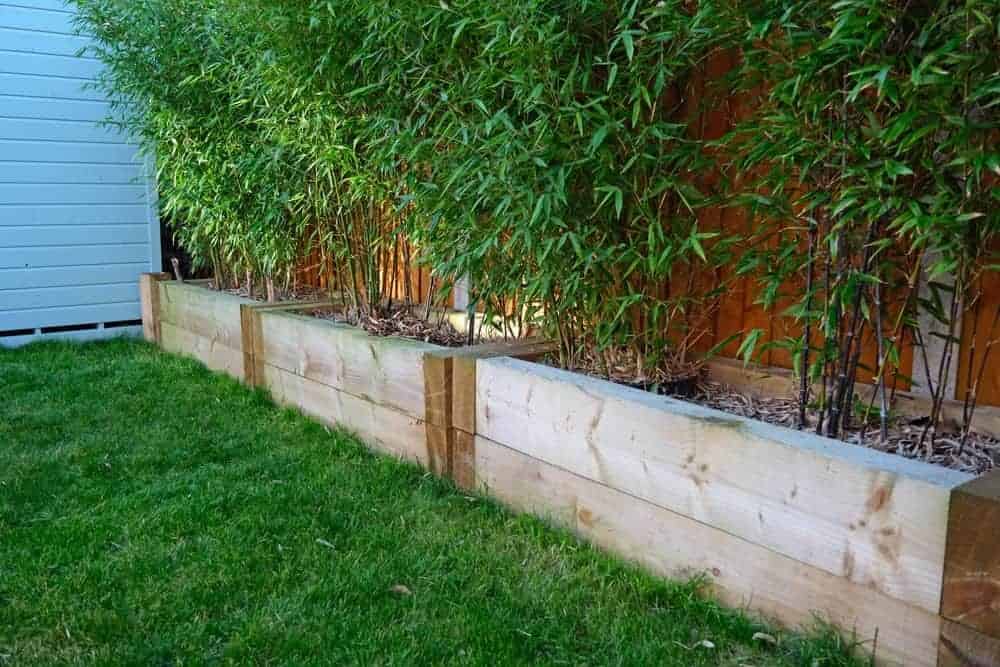When discussing gardening with experienced green thumbs, mention of growing bamboo can elicit a mix of surprise and concern. The assumption is that once planted, bamboo will rapidly sprawl across the garden, leaving the homeowner bewildered and frustrated. However, the truth lies in choosing the right type of bamboo and dedicating time to its care.
Bamboo’s remarkable growth rate is indeed impressive, but it also offers numerous benefits, including sustainable building materials, natural privacy screens, and an exotic ambiance that can elevate any outdoor space.
What is Bamboo?
Bamboo’s humble appearance often leads people to underestimate its significance. However, this versatile grass is actually a remarkable species that has been fascinating humans for centuries. As it turns out, giant bamboo is the largest grass in the world, with some species capable of growing up to an inch and a half every hour!
This rapid growth is made possible by the plant’s ability to spread through aggressive rhizomes that produce new shoots underground, regardless of how much of the above-ground structure is harvested. In fact, there are over 1,500 species of bamboo found across the globe, with many more still waiting to be discovered. Native to tropical and sub-tropical environments, bamboo thrives in a variety of weather conditions.
While it’s commonly associated with Asian landscapes and island paradises, this hardy perennial can also be found growing wild in certain regions of the United States, particularly near riverbanks and marshy areas. The stems of bamboo, known as culms, emerge from the soil at their mature diameter before stretching towards the sky over the course of several months.
After reaching full height, the culm’s exterior hardens while its interior decays, eventually becoming ready for harvest after around five years. This remarkable growth cycle has made bamboo a valuable resource for construction, crafts, and other purposes.
Varieties of Bamboo
While there are numerous bamboo varieties suitable for landscaping and gardening, our focus will be on the types that thrive in these environments. Some species are better suited for construction, crafting, or even farming, but we’ll concentrate on those that can be planted in your garden. Two main growth habits exist, differing significantly due to their underground rhizomes. Clumping bamboo is sympodial, featuring short rhizomes that spread slowly and controllably around the plant.
This type of growth habit makes it an ideal choice for home gardens. On the other hand, running bamboo is monopodial, boasting long rhizomes that quickly spread away from the original plant, often taking over the surrounding area in a short period. While running bamboo can be a desirable option for certain applications, it’s generally not recommended for residential gardens due to its invasive nature.
In contrast, clumping bamboo offers a more manageable and controlled growth pattern, making it an excellent choice for gardeners seeking a low-maintenance option.
Bambusa
Among the many species of bamboo, some stand out for their unique characteristics and uses. Oldham’s bamboo (B. oldhamii) is a popular choice in North America, prized for its large size and strength. When given ideal conditions with ample water, it can reach an impressive 50 feet high and 15 feet across, making it a great option for construction and furniture-making projects. In contrast, Buddha Belly bamboo (B.
ventricosa) offers a more compact alternative, available in both dwarf and giant varieties. The stem’s distinctive ring pattern gives the appearance of a fat belly, while the giant variety can reach 45 feet high with a 15-foot spread. For smaller spaces or container gardens, the dwarf variety is an excellent choice. Meanwhile, Tiny Fern bamboo (B.
multiplex) lives up to its name, growing no taller than three feet and ideal for beginners or those looking to add a touch of greenery to a small area.
Fargesia
While most bamboo varieties thrive in warm climates, some Fargesia species exhibit remarkable cold tolerance. One notable exception is Umbrella Bamboo (F. Murielae), which produces striking blue shoots that gradually turn green and yellow as they mature. Its narrow culms are remarkably resilient, able to withstand temperatures as low as -20°F. Another cold-hardy variety is Blue Fountain (F. Nitida), characterized by dark blue to purple culms and robust foliage that cascades down to the ground.
This species can grow up to 15 feet tall, with culms about one inch in diameter. For its part, Dragon Head (F. Rufa) reaches a height of around 10 feet and prefers partial shade. Its thin, fine culms are surprisingly able to survive temperatures as low as -15°F, making it an attractive option for gardeners who want to add some Fargesia charm to their outdoor spaces.
Chusquea
The giant cane species (C. gigantea) originates from Latin America and boasts an impressive level of cold tolerance. What sets it apart from other culms in this genus is the remarkable solidity of its stems, a trait that deviates significantly from the typical hollow structure found in many members of this family. When mature, C. gigantea can grow up to 25 feet tall, with each individual stem (culm) measuring about an inch and a half in diameter.
Its yellow color is punctuated by distinctive green nodes, adding visual interest to its otherwise slender profile.
Borinda
The Borinda genus encompasses numerous ornamental bamboos that hail from regions surrounding Southern China and Nepal. One notable species within this group is the Chocolate Bamboo (B. Fungosa), which boasts dark brown culms and is characterized by its weeping habit. Another standout is B. papyrifera, a truly remarkable bamboo that undergoes a striking transformation as it matures.
Initially, the new culms emerge with a light blue and white hue, only to gradually shift towards a bright yellow coloration accompanied by an impressive width.
Planting and Propagating Bamboo
Starting a bamboo garden can begin with either seeds or rhizomes, but opting for the latter offers a more straightforward and reliable approach. Although this method tends to come at a higher cost, it ultimately depends on your individual circumstances and budgetary constraints.
For those looking to get started without breaking the bank, exploring alternative sources such as borrowing from friends or fellow gardeners who may be willing to share their own rhizomes can provide an added layer of flexibility.
Dividing Rhizomes
To successfully multiply your bamboo plants, start by thoroughly watering them at least a day prior to propagation, ensuring the soil is moist but not waterlogged. Next, carefully excavate the rhizomes as far away from the plant’s base as possible. Gently lift the rhizomes and inspect for roots emerging. Aim to identify sections with robust root systems, typically accompanied by multiple small culms or buds – these are the precursors to new bamboo plants.
Ideally, you’ll want to extract two to three shoots in this manner. Using a sharp pair of pruning shears, cut the rhizome at its base, then meticulously clean away dirt and debris to inspect for any signs of disease or damage. Subsequently, divide the rhizome into individual sections, ensuring each cutting features a single shoot. Fill a container with a seed-raising medium to about halfway, placing the rhizome flat with roots facing downwards and shoots pointing upwards.
Top-dress with additional seed-raising mix, taking care to fully encase the shoot. Maintain consistent moisture levels in the soil. Be prepared for an unpredictable emergence period – it’s not uncommon for root development to become visible through drainage holes before the actual shoot materializes above ground. Once new growth is evident, transplant the plant into its desired growing location.
Planting Seeds
While bamboo flowers do occur sporadically and infrequently produce seeds, the germination process can be unreliable. The seeds themselves have a limited shelf life, making it crucial to plant them immediately after purchase. If not, the chances of successful germination decrease significantly. Seeds are worth trying, but they’re not the most effective method for growing bamboo. When planting, ensure the soil remains consistently moist and lightly cover with seed starting medium.
Monitor the soil’s moisture levels until new growth emerges.
Dividing Culms
To successfully propagate your bamboo, start by carefully excavating a small section of the rhizome system from the mother plant. Ensure that you’re working with at least six inches of healthy rhizomes accompanied by a few shoots or stems. Once you’ve isolated the desired clump, gently replant it in its new location and provide adequate watering to help establish a strong root system.
Planting Transplants
When seeking out bamboo transplants, consider purchasing them from a local nursery for personalized guidance on suitable cultivars for your area. Alternatively, you can opt for a neighbor’s willing share or start fresh at a nursery. Be wary of big box stores, as they typically carry a limited selection that may not thrive in your specific region. To successfully plant your transplant, create a hole that is twice the width and same depth as the container it arrived in.
If your soil is sandy or clay-like, dig an even wider hole and amend it with generous amounts of well-rotted compost or manure. Gently remove the plant from its container and place it at the center of the hole. Fill around it with the amended soil to secure the bamboo’s position, then water thoroughly.
How to Care for Bamboo
Bamboo enthusiasts rejoice! With over 1,000 species to choose from, you’re likely to find one that thrives in your specific USDA Growing Zone – whether it’s as cold-hardy as zone 3 or as tropical as zone 11. The key is identifying the best type for your area and creating conditions conducive to its growth.
For a healthy start, make sure your soil has rich organic matter incorporated well into the mix. As a forest plant, bamboo loves a thick layer of natural mulch to keep it cozy.
Aim for loamy soil with a pH level around 6.0 – a sweet spot that most species appreciate.
Sunlight is also crucial; most bamboos require full sun with a dash of shade, while others prefer shadier spots. Take the time to research your specific variety’s preferences.
When it comes to watering, freshly planted bamboo generally requires frequent hydration – up to four times a week in hot and dry conditions.
The goal is moist soil without waterlogging; some species can tolerate brief periods of dryness. Be prepared to adjust based on local climate and plant type.
Fertilize your bamboo with a high-nitrogen fertilizer, typically a standard grass or lawn variety. Feed it once in the spring and again in the summer – this fast-growing plant will appreciate the boost.
If you’re aiming for a dense screen, space your bamboos about five feet apart (dependent on cultivar).
For a lush grove effect, plant 10 to 20 feet apart, depending on type and growth habit. Clumping bamboo requires pruning to maintain an upright appearance; trim away damaged or unsightly stems, and cut the outer culms back to ground level to keep it looking its best.
4 Tips For Containing Bamboo
To keep your bamboo plant from spreading to areas you’d rather not have it, create a trench around the perimeter that’s approximately 20 inches deep. Fill the trench with stones or large rocks to prevent rhizome growth. Alternatively, consider using a plastic bamboo barrier, which comes in various thicknesses and is most effective when installed at planting time.
Regularly inspect your soil for emerging rhizomes and remove them promptly, ensuring you dispose of them properly to prevent unwanted spread. To further control the plant’s growth, consider potting it in large, sturdy containers that can be repotted annually to prune the root system and rhizomes. For a more controlled environment, bamboo can also thrive in raised beds.
Companion Planting For Growing Bamboo
For a lush and thriving garden bed, consider planting alongside bamboo. You can choose from a variety of shade-loving species that have shallow root systems, allowing them to coexist harmoniously with the towering bamboo. Some excellent options include oleander, peppers, yams, orchids, ornamental grasses, and bromeliads.
Problems and Solutions For Growing Bamboo
While bamboo is generally resilient and requires minimal maintenance to thrive, it’s not entirely immune to pests and diseases. As such, it’s essential to be aware of the most common issues that may affect its health. These include
Bamboo Spider Mites
When temperatures soar and humidity drops, tiny Stigmaeopsis spp. mites become a common sight in gardens. Their presence is often accompanied by yellowing leaves and fine webs spun on undersides of foliage. To prevent these pesky creatures from multiplying, it’s crucial to take proactive measures. A good insecticidal soap or neem oil sprays can be effective in keeping their populations under control.
For added peace of mind, consider applying a preventative spray before hot and dry weather sets in.
Aphids
Like many plant species, bamboo has its vulnerabilities, and one common issue it faces is the infestation of aphids. In order to effectively manage this problem, understanding how to recognize and address the infestation is crucial. For a detailed guide on identifying and treating aphids in your bamboo plants, please refer to our in-depth article.
Bamboo Mealybug
Like certain plant-dwelling insects, the sap-sucking bamboo palmicultor lumpurensis and noxious mealybugs antonina pretiosa can cause significant harm to your plants by draining their vitality. A common indicator of this infestation is the presence of a sticky, white substance on the leaves. Remove this residue to reveal tiny pink bugs underneath.
To address this issue, consider introducing natural predators such as parasitic wasps from genera coccophagus, leptomastix, allotropa, pseudaphycus, and acerophagus. Lady beetles, lacewings, and pirate bugs also prey on these pests. By promoting the presence of these natural enemies, you can avoid using broad-spectrum insecticides. A more targeted approach is to wipe down affected areas with isopropyl alcohol.
If the infestation persists or worsens, a last resort may be necessary; in this case, spray the mealybugs directly with insecticidal soap or neem oil, ensuring repeated applications every few weeks.
Bamboo Mosaic Virus
Bamboo Mosaic Virus, also known as BaMV, typically spreads through contact with infected gardening tools or plants sourced from nurseries that harbored the virus. Once introduced, the virus causes leaves to exhibit discoloration and a gradual die-back, starting at the top of the plant and progressing downwards.
Regrettably, there is no definitive cure for BaMV, but strategic pruning can help maintain the health and vitality of the plant.
If left untreated, however, it may be necessary to remove the affected bamboo and start anew. It’s recommended to allow the soil a full year to recover and the virus to dissipate before introducing new bamboo.
Root Rot
Rot is a fungal disease caused by various species of Armillaria, commonly known as honey mushrooms. One of the most visible signs of infection is the presence of mushrooms growing on the outside of the plant, often in clusters at the base of the stem. If left untreated, rot can spread quickly and require drastic measures to prevent its further dissemination. Typically, this involves removing affected stems and rhizomes to contain the disease.
Rust
Rust, another fungal disease, affects bamboo caused by pathogens from the Kweilingia, Puccinia Uredo Phakospora Stereostratum, and Tunicopsora genera. Typically, rust manifests on older plants or heat-stressed bamboo, initially appearing on leaves before spreading to canes. To combat this issue, utilize a copper-based fungicide while ensuring the bamboo receives adequate water and fertilizer.
Using Bamboo
Beyond its aesthetic appeal in landscaping, bamboo’s versatility knows no bounds. From crafting tools and textiles to creating furniture, edible products, and even sustainable energy sources, the possibilities are endless. Whether you’re looking to enhance a chicken coop with sturdy perches or conceal an unsightly wall with a natural-looking fence, the uses for bamboo extend far beyond mere decoration.
With imagination being the only limiting factor, the potential applications of this remarkable resource are virtually limitless.

